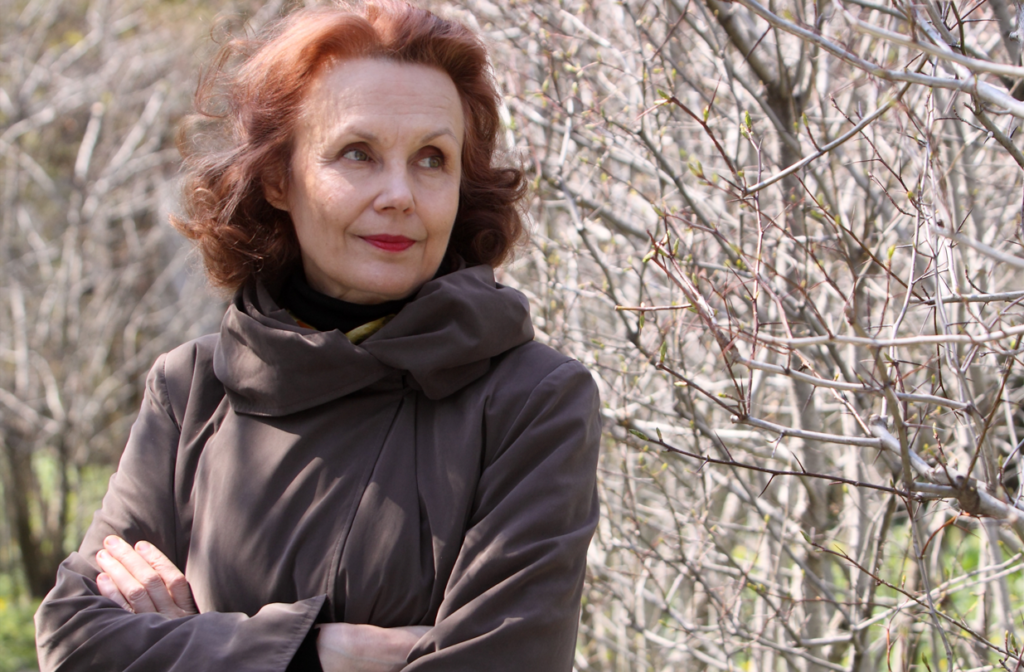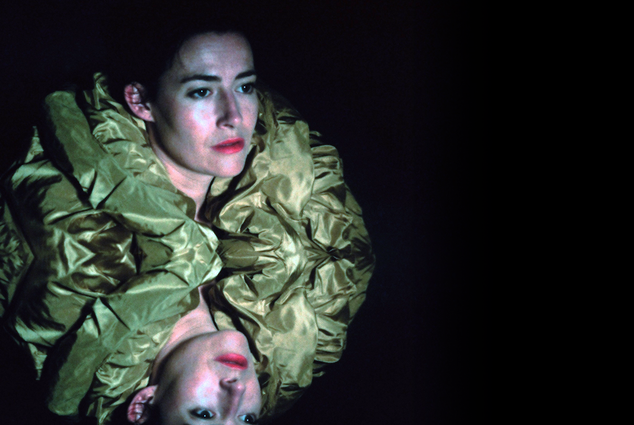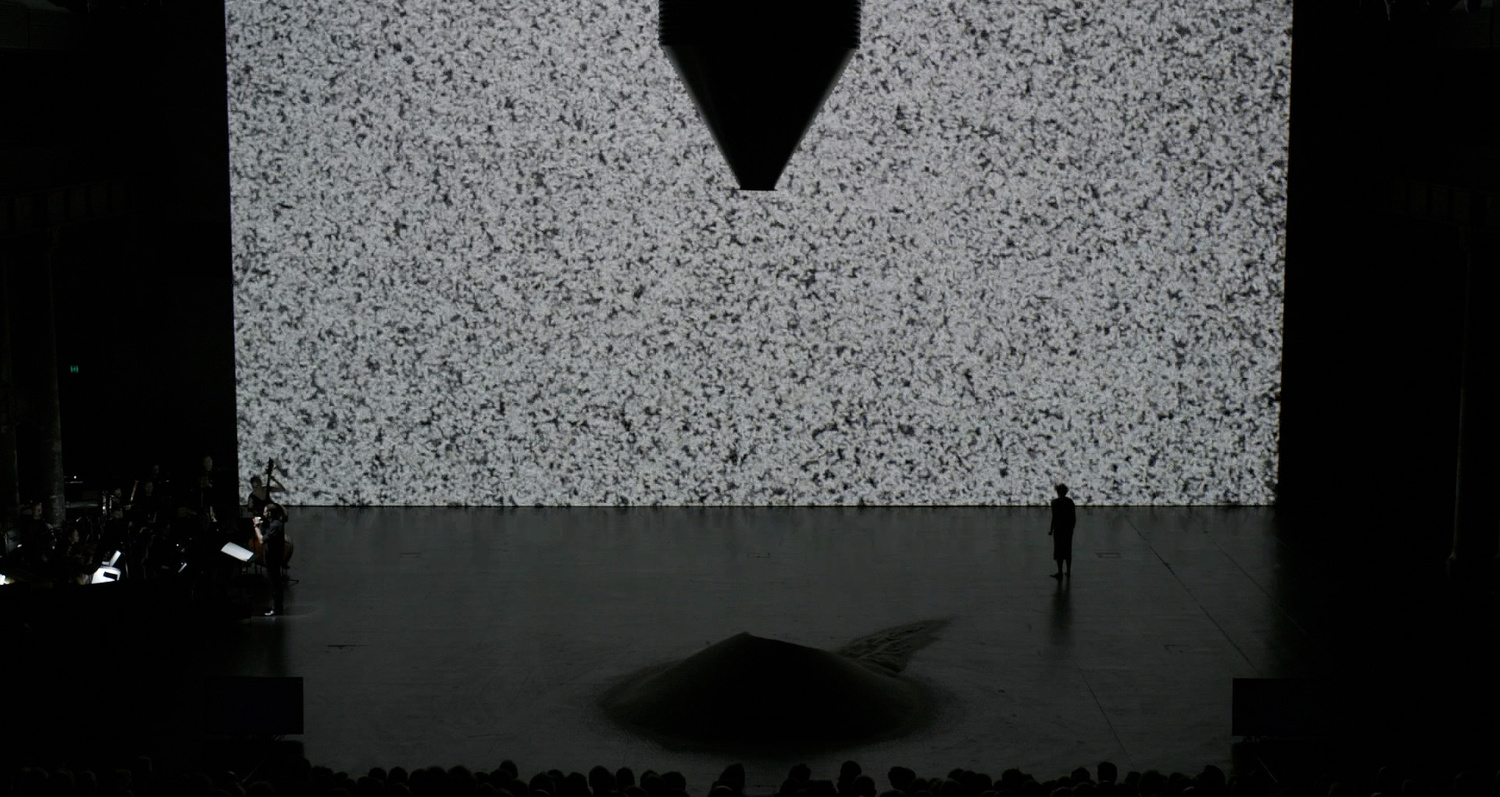SAARIAHO’S MUSICAL PATH TO SIMONE
SCO’s Artistic Director discusses the work of Saariaho
By Jack Symonds
Why did I so strongly want to bring Kaija Saariaho’s La Passion de Simone to Sydney Chamber Opera? Simply because the fusion of Saariaho’s unique musical style with the ideas and persona of Simone Weil seemed a perfect match, and one ripe for investigation on the stage by a probing creative team.
Saariaho’s music has been a love of mine since I was a teenager- I must have played albums of her string concertos and orchestral works a hundred times. The universe of sound she invariably unveils in the first five seconds of a piece is musically unique and expressively sui generis: I can’t think of any composer who makes music the way she does.
The glistening webs of tone that open each work seem to stretch from the bottom to the top of one’s aural perception, ushering in an ocean of music that teems with a seemingly impossible abundance of sonic life. Much has been written comparing Saariaho’s music to natural phenomena; waves, lava, the slow unfolding of flowers. The essence of her art is to bend the instrumental and vocal colours available to create a sense of sound reborn from the grit of white noise, embracing the purest fundamentals of music making in striking new ways.
A little bit of history for those wanting to know where Simone came from: in the 1990s Saariaho really began to integrate her early explorations of electronics in Paris with her instrumental writing. It’s like the whole orchestra heaves with an electronic force trying to break out of what it means to play ‘correctly’. She refined this into works of considerable drama, density and savage beauty- listen especially to the orchestral diptych Du cristal …à la fumée. That piece does what it promises: gradually turns a very hard, crystal-like musical object into the aural equivalent of smoke by a kind of musical alchemy where everything melts and becomes effervescent. This process is here perfected, and never left her musical arsenal; La Passion de Simone seems to be built on this principle of writing. What I love about this earlier style is that even though it’s sometimes almost impossibly dense, her clarity of composition and orchestration means that it’s like one hears almost limitless depths of ideas and textures in some kind of vast, uncharted world.
Gradually, the density begins to clear. A piece like Graal Théâtre is every bit as complex in its thought patterns as Du cristal, but the lines are cleaner and the whole sound world more iridescent; the colours are chosen with delicacy rather than the immense textural strength of before. This is a violin concerto, and the violin’s long, singing lines perhaps prepared the way for her long-awaited détente with the solo voice.
Kaija Saariaho Graal Theatre Violin concerto
It was the original singer of Simone, soprano Dawn Upshaw, who initially seems to have inspired Saariaho to begin to write more – and differently – for the voice. The soprano and electronics piece Lonh, and soprano, female choir and orchestra work Château de l’âme seem to be gateways to the operas, and to Saariaho’s more recent music in general. The singing lines she was making room for are now, very naturally, vocal melodies. She also seemed to happen upon a distinctive vocal style almost immediately. Sung melodies act like extraordinary, lyrical ornaments on the orchestral or instrumental texture creating long, hypnotic lines of arresting beauty. They seem sensually arching, always with clear high points and expressive directness. Her background in electronics and composition using the natural overtone series (‘Spectralism’) means that the vertical harmonies which produce these horizontal lines are extremely resonant and have a real connection to each other – even though they are complex. The way Saariaho spaces notes on top of each other is carefully done so that we can hear every single pitch precisely, making the music feel inevitable and somehow ‘right’.
Her big hit was the opera L’amour de loin from 2000– a dreamy, medieval troubadour work which is perhaps the absolute epitome of her style, recently staged by Robert Lepage at the Metropolitan Opera. The old troubadour-inspired songs and chants which form the backdrop to this opera really seem to have gotten under her skin and even emerge, transformed in subsequent pieces. The next opera was perhaps a surprise in its directness and brutality: Adriana Mater is about a woman raped in war, becoming pregnant, and the story of her bringing up a son who becomes a violent, complex man. All the implicit, lava-violence of the early ‘90s music comes bursting out in that piece which still manages to contain a final scene painting the most moving portrait of maternal love and forgiveness I think I’ve ever heard in opera. Simone was next and, I think, successfully marries the brutality of Adriana with the voluptuousness and languor of L’amour de loin.
L'Amour de Loin: "Si tu t'appelles Amour", staged by Robert Lepage at the Metropolitan Opera
All the best qualities of Saariaho’s music are on display in this extraordinary piece from 2006. The enveloping mystery of the opening immediately conjures the paradoxical, strange figure of Simone Weil with a pool of sound that seems as if it has existed forever, waiting for this story to be told.
The solo soprano takes on Simone as an idea: she sings to her, about her, through her, around her and speaks as her, allowing Saariaho to use instruments, voices and text to paint a more complex and fully-realised Simone than any single performer could ever portray. The additional use of choral voices adds immeasurably – they are embedded in the tapestry of the orchestra, and I see them giving words and definite meaning to the instruments to articulate this imagined, musical Simone.
The vocal melodies and words are then spun in time over a constantly shifting instrumental backdrop of resonance. It’s this sense that everything is always melting, transforming and alive that is essential to capture in every aspect of realising her work.
..."The universe of sound she invariably unveils in the first five seconds of a piece is musically unique and expressively sui generis: I can’t think of any composer who makes music the way she does."
There is also an ever-present feeling of timelessness, and a deliberate confusion of the unfolding of musical time versus clock time. In a great Saariaho performance you should feel like you have no idea how long you’ve been there – five minutes could stretch into eternity, or the whole thing could feel like an upbeat to a single, new second. I will never forget the feeling of seeing the world premiere of Lumière et pesanteur in 2009. It’s actually a short orchestral piece, a transcription of the 8th ‘Station’ of Simone. I hadn’t heard Simone at all then, but the sense that this six or so minutes was complete, perfected, suspended time in an exquisite unfolding world- like the most delicate plant opening in timelapse- has never left me. Since then, I knew I had to find a way to bring a major piece of Saariaho’s to Sydney, and Simone is, unbelievably, the first of her larger works to ever be performed in Australia.
Director Peter Sellars has said of Saariaho’s work that “in the 21st century…we have a responsibility to do more than sit around and tell sad stories. Here we see there will be a future. And that future has been guaranteed all over the world by women, women who in impossible situations nourish and cultivate human dignity.” Simone Weil: figure of impossible, paradoxical grace, Kaija Saariaho: composer of some of today’s greatest and most distinctive music, and the Australian dream team of director Imara Savage and designer Elizabeth Gadsby are just the people to show us this future.


